Sagan: I didn't have the legs to beat Van Avermaet
World champion takes second place at Omloop Het Nieuwsblad in his stride
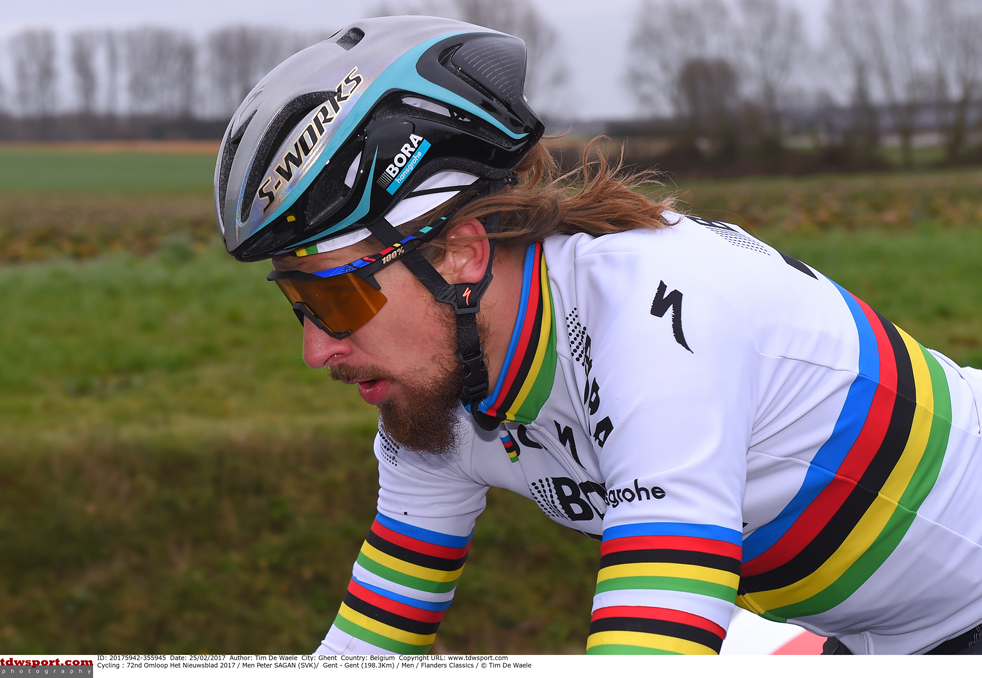
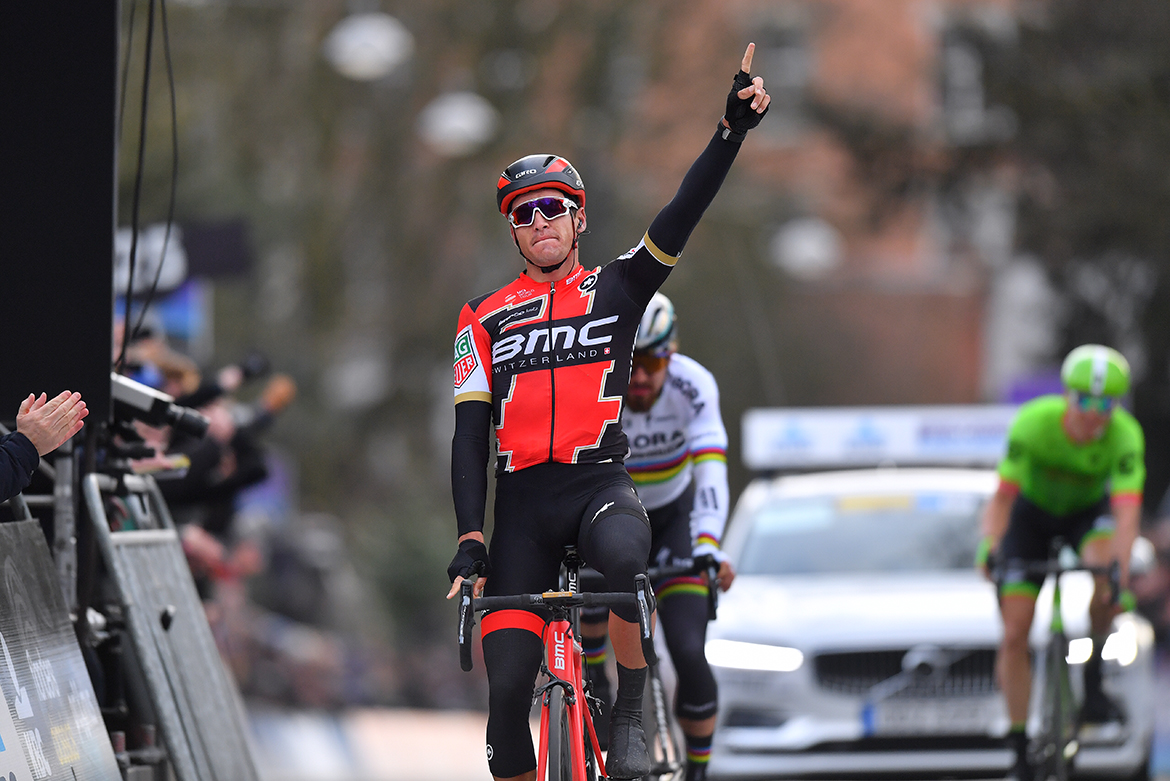
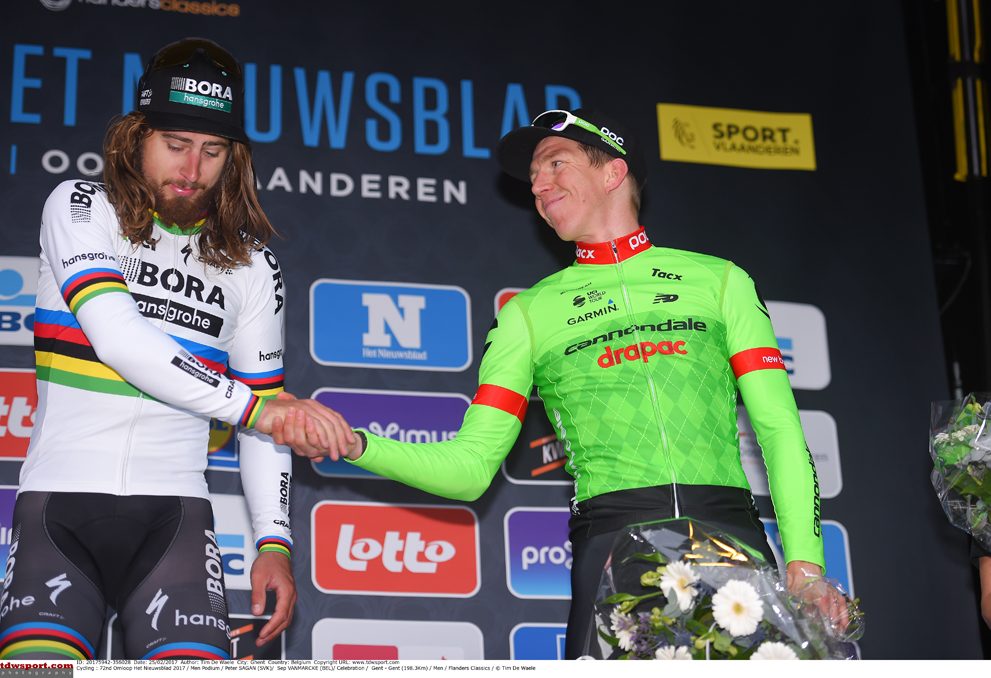
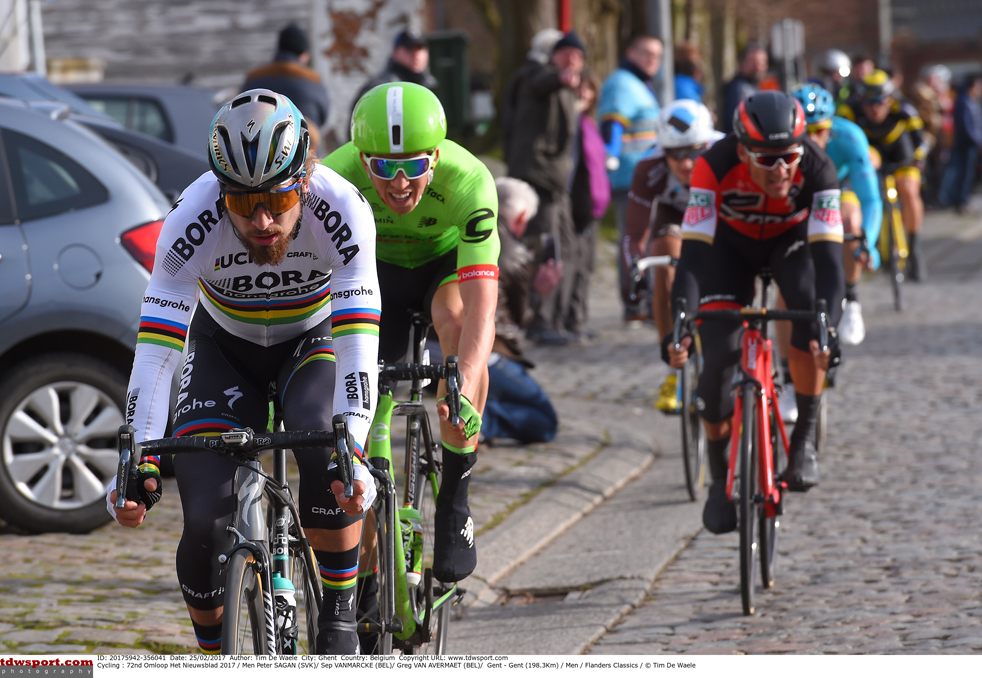
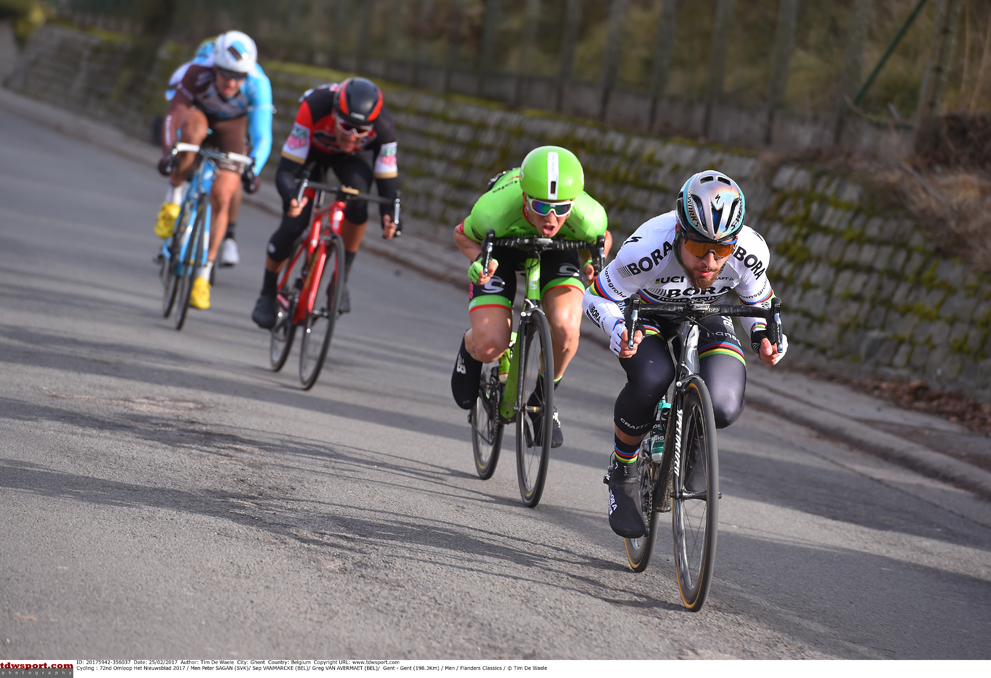
There were rumours that Peter Sagan (Bora-Hansgrohe) may have been suffering from a stomach ailment after he made a quick dash to the toilet following the sprint finish at Omloop Het Nieuwsblad. Sagan quickly dismissed that theory in his own dry style, telling a bemused Sporza reporter, “it’s normal to go to the toilet, no?”
Boonen, Van Avermaet and Sagan lead the way in Classics opening weekend - Preview
Boonen, Van Avermaet and Sagan lead the way in Classics opening weekend - Preview
Sagan evasive about his form before Omloop Het Nieuwsblad
Greg Van Avermaet wins Omloop Het Nieuwsblad
Van Avermaet: 'I was the smartest rider rather than the strongest'
Sidewalk riding sparks anger at Omloop Het Nieuwsblad
Sagan said that a small error in the sprint finish had not been the cause of his defeat. Instead, Sagan explained that he simply didn’t have the legs to move past winner Greg Van Avermaet (BMC), having done a lot of work in the break and suffering a touch of cramp in the final kilometres.
“I don’t know. It’s not every day that I can win. I worked a lot before we went to the finish, in the first group, and I didn’t have the legs to beat Greg,” said Sagan and later joked: “Ah, it’s good for the training. I don’t train at home so I’ve got to train in the races.”
Sagan was in a playful mood after the finish as he walked into his post-race Sporza interview, which the podium finishers do at most major Belgian races. He immediately lowered his chair so much that his chin barely came above the top of the desk, much to the amusement of third-placed Sep Vanmarcke (Cannondale-Drapac), who was already in the television studio.
Sagan briefly turned the tables too, choosing to play interviewer rather than interviewee, asking Vanmarcke, “Why didn’t you attack? You should attack. I don’t know why you didn’t.”
Vanmarcke brushed it off, saying that they had agreed to go for the group sprint, eliciting a brief ‘oh’ as a response before laughing to himself.
There were few signs that the world champion was feeling any pressure going into the Classics this year. While most of his rivals had been out in the Middle East, Sagan opted not to race in February, preferring to train at altitude at Sierra Nevada. The lack of racing kilometres didn’t show as he looked by far the strongest, driving the pace for most of the final kilometres.
The latest race content, interviews, features, reviews and expert buying guides, direct to your inbox!
There were a couple of uncharacteristic errors, and on one occasion he veered unexpectedly into the grass on the side of the road. A crash in the bunch on the approach to the Taaienberg, which ended the races of Tom Boonen and Alexander Kristoff, almost put paid to his hopes. He was further down the line when Jasper Stuyven initiated the crucial split in the peloton. Seeing Vanmarcke and Van Avermaet disappearing up the road, Sagan had to dig deep before it was too late, but it was a costly effort.
"I was already almost in the crash, and I had to come back into the group, and then the guys attacked there… It cost a lot of energy,” Sagan said. “It’s good. I was one month without racing, and it’s like copy paper from the last year. It’s ok. No problem.”
If Sagan could copy and paste his 2016 Classics campaign, which saw him claim victory at the Tour of Flanders, then a second successive runners-up spot at Omloop Het Nieuwsblad won’t trouble him too much.
Born in Ireland to a cycling family and later moved to the Isle of Man, so there was no surprise when I got into the sport. Studied sports journalism at university before going on to do a Masters in sports broadcast. After university I spent three months interning at Eurosport, where I covered the Tour de France. In 2012 I started at Procycling Magazine, before becoming the deputy editor of Procycling Week. I then joined Cyclingnews, in December 2013.